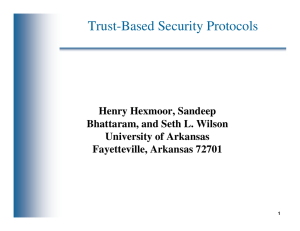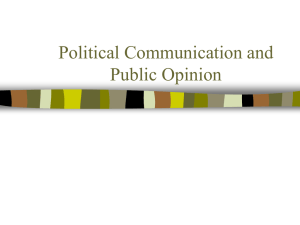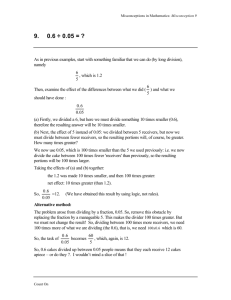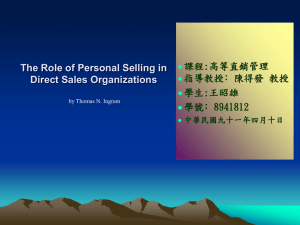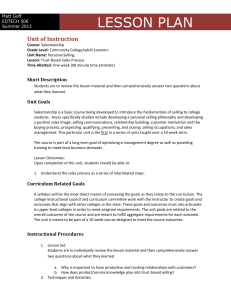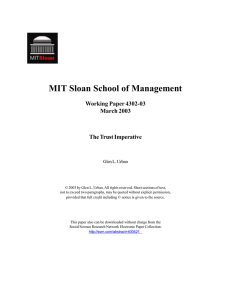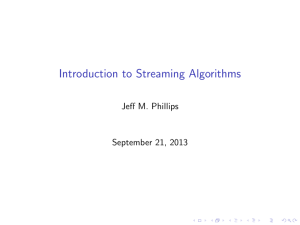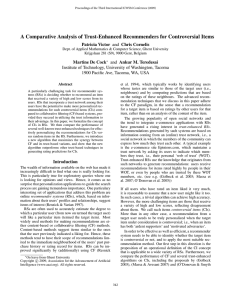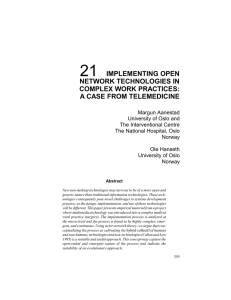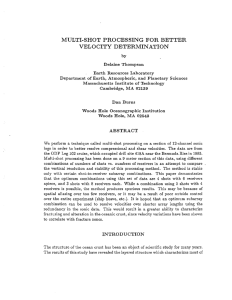Trust-Based Security Protocols
advertisement
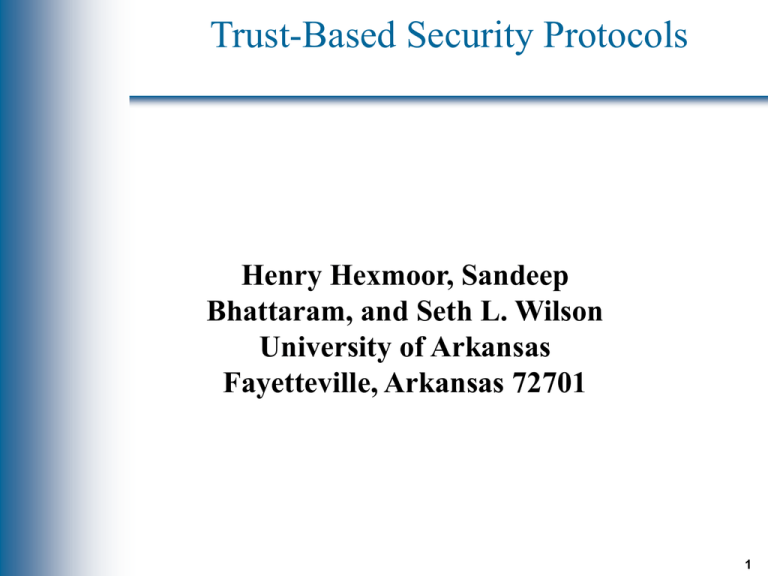
Trust-Based Security Protocols Henry Hexmoor, Sandeep Bhattaram, and Seth L. Wilson University of Arkansas Fayetteville, Arkansas 72701 1 Orientation • AI/agents group working on knowledge representation and management… • Our Primary focus is on design and implementation of socially adept agents… • “Soft security” as our newest KR&M research area with modest AFOSR funding… 2 Orientation and Premise • Information sharing among disparately-located individuals with security concerns for confidentiality and integrity… sensor networks… • Existing organizational policies lack in impersonal nature of the work environments and mutuality of trust and respect. • We are developing trust-based security policies in information sharing that consider “trust” as the key parameter… 3 Preliminaries • Interpersonal Trust: Agent x’s trust in agent y is agent x’s estimation • • • • of the probability that agent y will preserve agent x’s welfare with regard to actions to be performed If a fact initiator agent determines that their trust in a recipient agent does not warrant them to receive the fact, then the recipient agent is considered to be an unintended receiver. Imagine a DAG of trust, i.e., a trust network… A trust policy prescribes a trust update policy that regulates changes in interpersonal trust relations in the first order to reduce unintended receivers while increasing the rate of information sharing. The larger goal is to establish and maintain enterprise KM regimes and to regulate information sharing topologies… 4 Towards System-wide Metrics… Information availability, IA, is the degree to which information is freely available when shared among a group of agents. IA, a system level metric, is the sum of number of satisfied agents and the number of intended receivers expressed as a percentage of the total facts shared. Security Measure, SM, is a system level metric, that measures the number of unintended receivers expressed as a percentage of the total facts shared. 5 A simulation with randomized facts and agents… 6 A intuitive observation… IA Saturation Cycle 14 12 10 8 6 4 2 0 0 1 2 3 4 5 6 Degrees of policy restriction 7 Another observation… 8 Conclusion •The trust-based information sharing model sufficiently and effectively guarantees the high availability of information while limiting security breaches. •Our simulations have demonstrated that the use of a “soft security” mechanism such as trust is as effective as hard security mechanisms. •The inherent advantage of our model is in its simplicity, malleability, and scalability. 9
